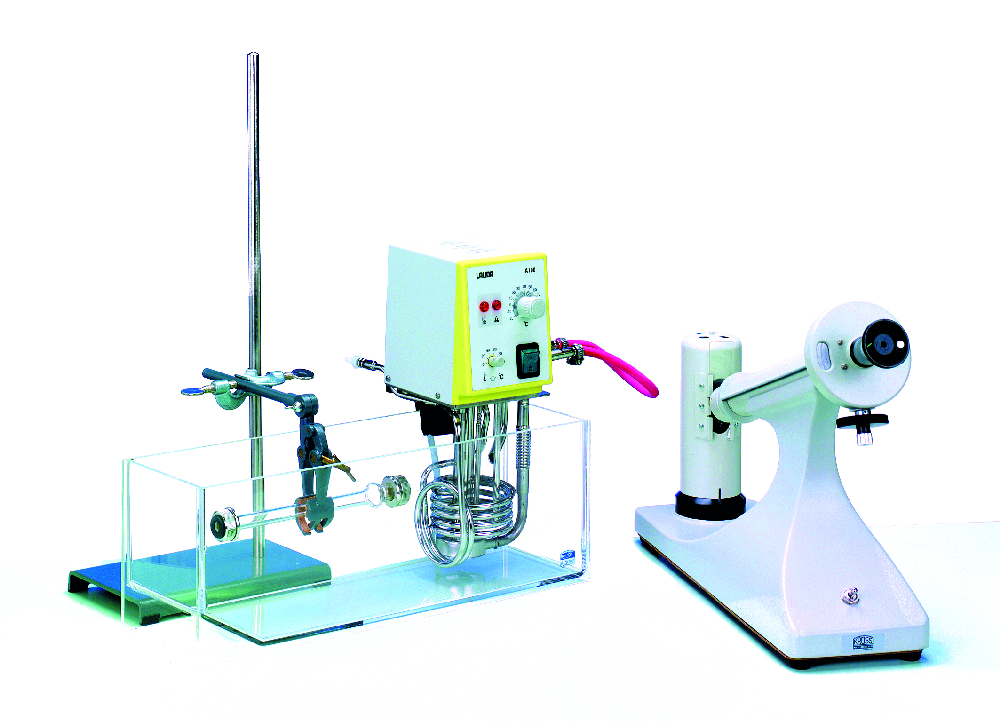Principle
The inversion reaction of saccharose, which is catalysed by protons, produces invert sugar, which is a mixture of glucose and fructose. The reaction is accompanied by a change in the optical rotation of the system. Glucose rotates the polarisation plane of linearly polarised light to the right, while inverted sugar rotates it to the left. A half-shade polarimeter is used for the measurement of the change in the angle of rotation of polarised light during the inversion reaction of saccharose over time.
Benefits
- Easy entry into polarimetry
- Combination of methodological skills and theoretical knowledge
Tasks
- Determine the specific rotation of saccharose and lactose by measuring the rotation angle of solutions of various concentrations.
- Determine the rate constant of the inversion of saccharose.
Learning objectives
- Reaction rate
- First order reaction
- Polarimetry
- Optical rotation
Necessary accessories
- Precision balance 620g/0.001g

